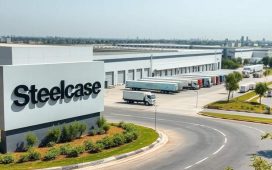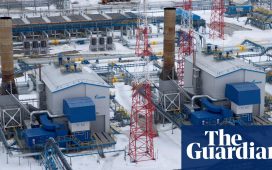Jeremy Hunt has kickstarted a fresh push into nuclear power, which he hopes will provide a quarter of Britain’s electricity by 2050. In his budget speech, the chancellor announced a competition to co-fund small nuclear plants and hopes a new delivery body, Great British Nuclear, will ease the creation of nuclear projects. He also launched a consultation to classify nuclear as “environmentally sustainable”. But is it?
Does Britain need nuclear power?
Hunt follows in the footsteps of the former prime minister Boris Johnson in making bold statements on the importance of nuclear. Britain’s nuclear power stations date back to the 1950s and are now ageing, with just one, Sizewell B, still scheduled to be running after 2028. Last week, France’s EDF – which operates the stations – said it had extended the life of two other plants.
Proponents argue that nuclear provides a “baseload” of power that can be relied on, whereas renewable energy such as wind and solar is dependent on weather conditions, meaning it cannot always help match supply with demand. There are also high hopes for nuclear fusion as an energy source, but this has not been commercialised.
Why is nuclear being reclassified?
To attract private investment. The consultation is on the “taxonomy” or financial classification system of energy. This is important as there have been a proliferation of funds dedicated to environmental, social and governance (ESG) investments springing up in global financial markets in recent years. These funds promise their investors that their cash is going towards social good, such as tackling the climate crisis. Hunt was also under pressure to respond to the Inflation Reduction Act, Joe Biden’s $369bn climate subsidy package.
Is Britain the first country to do this?
No. The European Commission decided last year to label nuclear as a “green” investment. The EU’s parliament said the taxonomy change aimed “to boost green investments and prevent ‘greenwashing’”. However, the decision has faced legal challenges by groups including Greenpeace.
Will it make a difference?
Nuclear projects cost tens of billions of pounds to develop and build, so smoothing the path to secure investment is seen as crucial. In the UK, the government has tasked bankers with finding funders for Sizewell C, in partnership with EDF, after easing China General Nuclear out of the project over security fears. The government has committed £700m to the Suffolk plant, which could cost more than £30bn to build. Its sister site, Hinkley Point C in Somerset, has been beset with delays and cost overruns. Senior industry sources said the taxonomy change would help in the hunt for Sizewell C’s funders.
The backers of small modular reactors, including a programme developed by Rolls-Royce, will also hope to receive significant investment. Rolls-Royce’s’ aim is to create a fleet of smaller, factory-built nuclear plants across Britain.
Is nuclear energy renewable?
Uranium, the element used in nuclear power, is a finite resource, which is mined from the ground and not considered renewable. However, it can be argued that, as nuclear power stations use a very small amount of fuel to generate the same amount of electricity, they are preferable to gas-fired power stations, which are expected to be around for many years.
after newsletter promotion
Is it really green?
Advocates of nuclear claim it should be seen as a green energy source as it does not release harmful emissions into the air. National Grid says that the “lifecycle emissions” – emissions resulting from every stage of the production process – are also significantly lower than in fossil fuel-based generation.
Hunt said on Wednesday that “increasing nuclear capacity is vital to meet our net zero obligations”. However, there are questions over how useful nuclear will realistically be in this mission. As projects take years to build – Sizewell C could be finished by the mid-2030s at a push – it can be argued that pursuing the project could prove a drain on government and financial resources, which could be better spent on rapidly scaling up Britain’s wind and solar capacity and improving electricity networks and storage. An effective ban on onshore wind developments remains in place.
Nuclear detractors also say nuclear cannot be seen as sustainable given the concerns over the potential environmental hazards in the long term. Shutting down sites such as Sellafield, in north-west England, will take generations and involves a painstaking process of carefully managing ageing buildings to ensure radioactive waste is not mishandled. In Finland, a huge effort is under way to bury waste in concrete deep underground.
It has also been argued that – as nuclear plants need water for cooling so are often built near the coast – rising sea levels could make some projects obsolete before building work is completed.
That is not the only concern, is it?
No. The history of the nuclear industry has shown an oscillating interest from governments and investors, influenced by a series of devastating incidents including Three Mile Island in 1979, Chornobyl in 1986 and Fukushima in 2011. Russia’s attack on Zaporizhzhia, Europe’s biggest nuclear plant, in Ukraine, has again raised concerns over a nuclear incident. .











